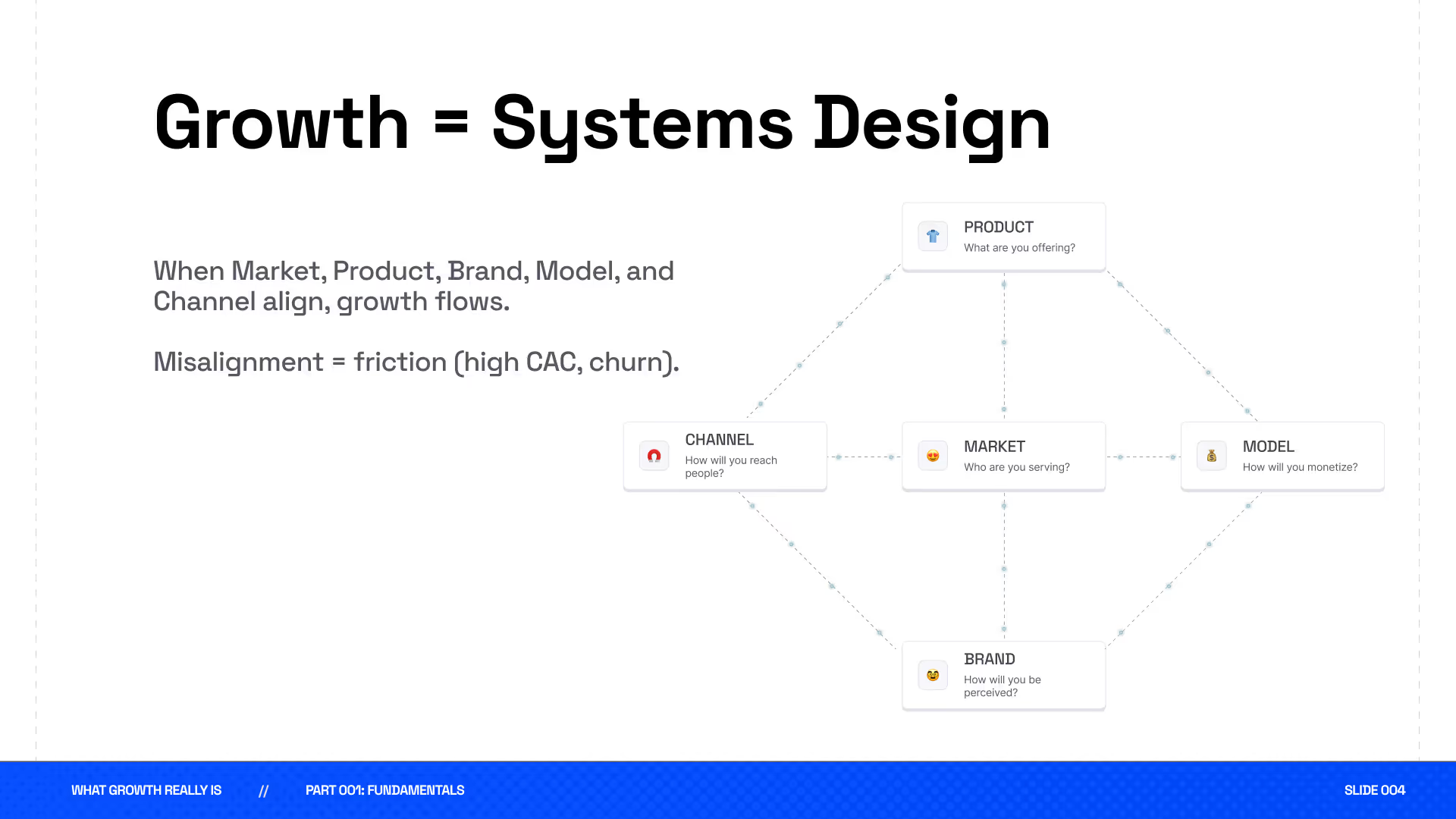
Conversation

🥳 Feedback Received!
Thanks for taking a moment to share your thoughts — it genuinely helps us make each chapter sharper.
What happens next:
- Your feedback goes straight to our product team.
- We’ll use it to refine lessons, clarify examples, and make the program even more useful.
Appreciate you helping make this program better for everyone.
Ready for your next challenge? 👇
Growth = Systems design
That brings us to the idea that growth equals systems design. The systems design concept is critical to understand, largely because the most common reason startups fail is actually due to systematic misalignment. It's not because they weren't running Meta ads at a high enough level. It's not because they weren’t running enough tests or publishing enough content.

If growing a company were as simple as knowing all the secrets of Meta ads or the latest and greatest SEO tactics, then we would all have billion-dollar companies. Very sadly, that’s just not how it works.
And intuitively, I think we all know this. You’ve very likely witnessed two companies running the same tactical playbook, yet only one of them actually has any success. That right there tells us growth does not start at the tactical layer.
In our view, most startups fail to grow due to systemic reasons.
And if your first thought is, “yeah, because they didn’t have product-market fit!” I’d argue that’s only a partial explanation. There are many startups that had PMF, yet never got off the ground. And I’d argue that a major reason for those failures is precisely because they were so tunnel visioned on PMF instead of recognizing that it is just one part of a bigger system.
This is why we are (and will continue) hammering this point home. It isn’t the difference between growing versus not growing, or growing slowly versus growing quickly, but literally, will your company succeed or fail?
The implication is that growth is not something that is slapped on top of our product at the last minute. It has to be engineered across the entirety of our business. And early, at that.


